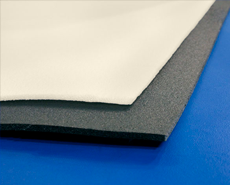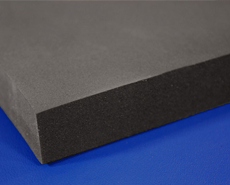

Polyethylene Foam Roll
Foam Types
Polyethylene Foam Roll
Standard Sizes
Lineal Foot, 50' Roll, 1 Full Roll, 2 Full Rolls
Heights
1/8", 1/4", 3/8", and 1/2"
Colors: Off-White and Charcoal
Features
Polyethylene Foam Roll's best application as a soundproofing material is as a sound barrier in or on walls, ceilings, or floors. It is most effective when used as a component of a multi-layered construction scheme.
Click here for available sizes and pricing!

Neoprene Foam
Foam Types
Neoprene-HQ
Standard Sizes
24"x80" and 48"x80"
Heights
1/8", 1/4", 3/8", 1/2", 3/4", 1", and 2"
Colors: Charcoal
Features
Neoprene's application is the same as Polyethylene Foam Roll, but being a denser foam, it is even better at stopping the transmission of sound. Neoprene is also more flame retardant than Polyethylene Foam Roll.
Click here for available sizes and pricing!
Neoprene: Meets FM VSS No. 302, UL 94 HBF & UL 94 HFI standards for flammability.
The MVSS-302 standard generally means that after brief exposure to flame, the foam will burn at a slow rate, with the possibility of self-extinguishing.
The UL 94 HBF & UL 94 HFI standards generally means if you were to briefly expose the foam to a flame, it will self-extinguish.





















